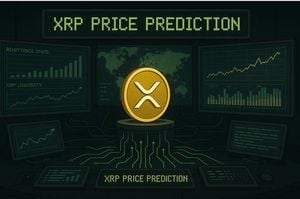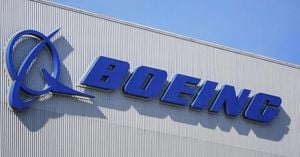Artificial intelligence (AI) is reshaping how companies approach environmental sustainability and energy efficiency, presenting both challenges and opportunities. Recent developments show corporations are increasingly pressured to align their economic strategies with ecological responsibilities, particularly as AI workloads and data processing demands have risen sharply, driving up energy consumption and emissions.
One company at the forefront of these changes is NetApp, headquartered in California. The data storage solution provider has recently received validation from the Science Based Targets initiative (SBTi), confirming its ambitious sustainability targets. Nicola Acutt, the Chief Sustainability Officer at NetApp, expressed the significance of this achievement, stating, “That’s why I’m so pleased...measuring sustainability initiatives.” This validation highlights the importance of sustainable measures not just for the company but as part of the broader ecosystem maintaining current environmental standards.
NetApp aims to reduce its absolute scope 1 and 2 greenhouse gas (GHG) emissions by 50.8% by 2030 from its 2020 baseline—an ambitious target driven by the increasing energy demands associated with AI workloads. Acutt noted, “The economics of data are changing...their energy costs are soaring.” This signifies the necessity for companies to rethink their energy strategies to cope with soaring operational costs due to heightened data processing needs.
Beyond their internal goals, tech firms face scrutiny over the environmental impact of data centers, now responsible for up to 1.5% of total global electricity consumption. Acutt compares the challenge of meeting business objectives amid sustainability pressures to “changing the tyres when your car is cruising down the highway.” Companies like NetApp are aligning product development with sustainable outcomes, allowing them to lead rather than react to these demands.
Adding to the discourse, new initiatives are proliferated across various sectors, including the pharmaceutical industry. Notably, over 70% of CO2 emissions within this sector are attributed to Scope 3 emissions, which encompass emissions across the value chain. Researchers argue for optimizing water and energy use through AI solutions, ensuring businesses can reduce their ecological footprints without sacrificing productivity. This perspective reflects the growing acknowledgment of AI’s role as both a tool and contributor to sustainable practices.
While the technological advancements promise improved resource management, they also manifest paradoxes. The Jevons Paradox suggests enhanced energy efficiency might not translate to reduced overall energy consumption. Instead, as company operations become more efficient through AI, companies may exploit these efficiencies to increase output rather than reduce input. This nuance emphasizes the need for continuous evaluation of the energy matrix and associated practices.
AI’s inherent resource demands are apparent as projections indicate the industry could consume between 85 and 134 terawatt-hours of electricity by 2027—matching the annual energy consumption of countries like the Netherlands. With these rising figures, technology giants are left to contend with both operational costs and public scrutiny over their ecological impact. While companies, like Servier, actively adopt AI technologies, they stress the importance of integrating renewable energy sources within their operational frameworks. Servier has continued to increase the proportion of renewable sources of electricity, which now stands at 19%, indicating progress toward sustainable practice.
Investors are aware of how these shifting paradigms impact their portfolios, as rising efficiency from startups like DeepSeek threatens previously bullish expectations for future energy demands driven by data centers. DeepSeek’s advancements bring forward questions about the future reliance on natural gas and other energy sources, which had been anticipated to satisfy the predicted rise of power consumption.
This shifting narrative calls for genuine reflection among businesses and investors alike. Companies dependent on historical growth metrics must grapple with the reality of energy consumption projections and how advanced technologies like AI might disrupt existing paradigms. Data center operators, independent power companies, and other stakeholders need to evaluate the intersection of technological development and energy management.
Moving forward, the convergence of AI’s soaring energy demands and the corporate world’s sustainability targets means companies must remain vigilant and strategic. Fostering innovations not only drives business outcomes but also promotes ecological responsibility. The path forward requires investment not only in technology but also steadfast commitment to sustainability initiatives.
NetApp and others are leading the charge, illustrating how forward-thinking strategies can translate ecological challenges posed by AI workloads and energy consumption demands. By maintaining focus on sustainable innovation, corporations have the ability to reshape their environmental impact, ensuring long-term viability not just for their companies but for the planet as well.



